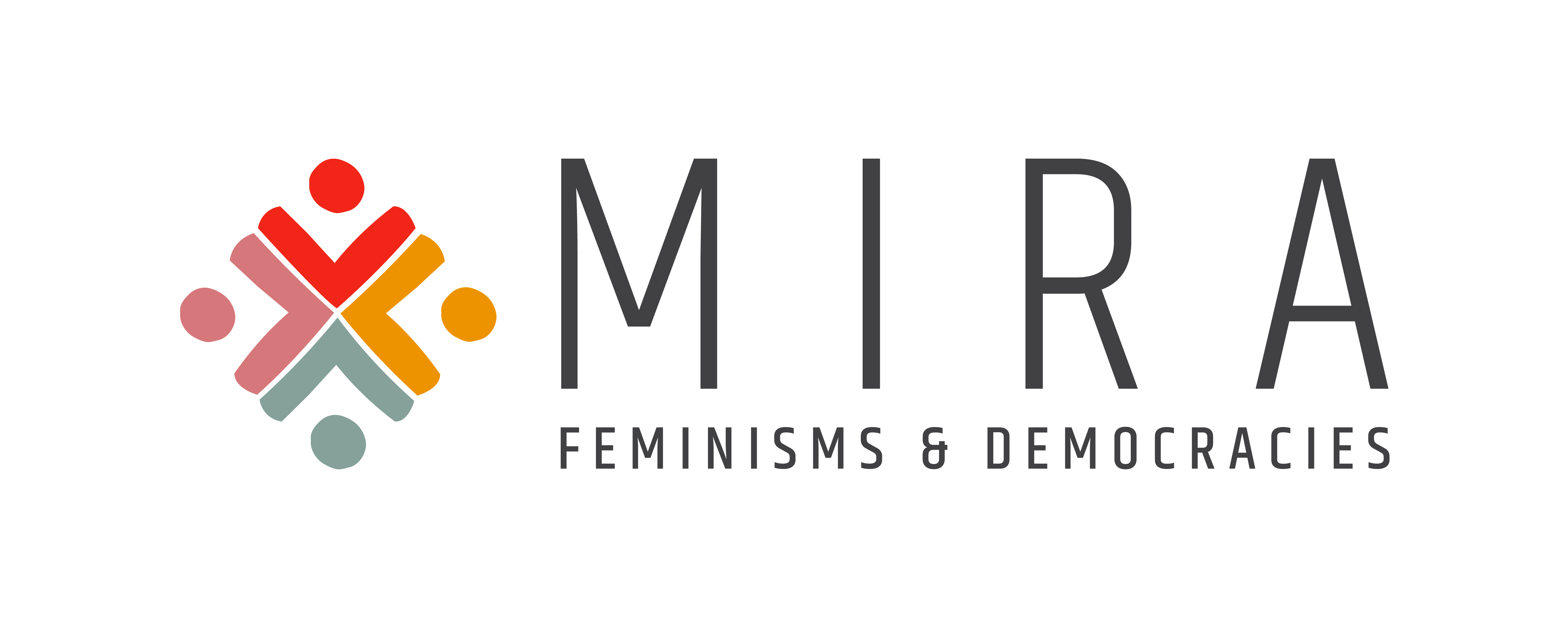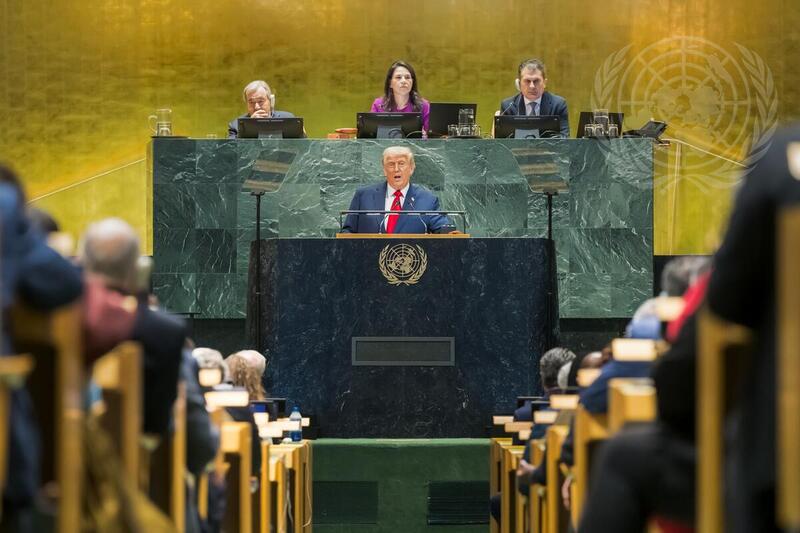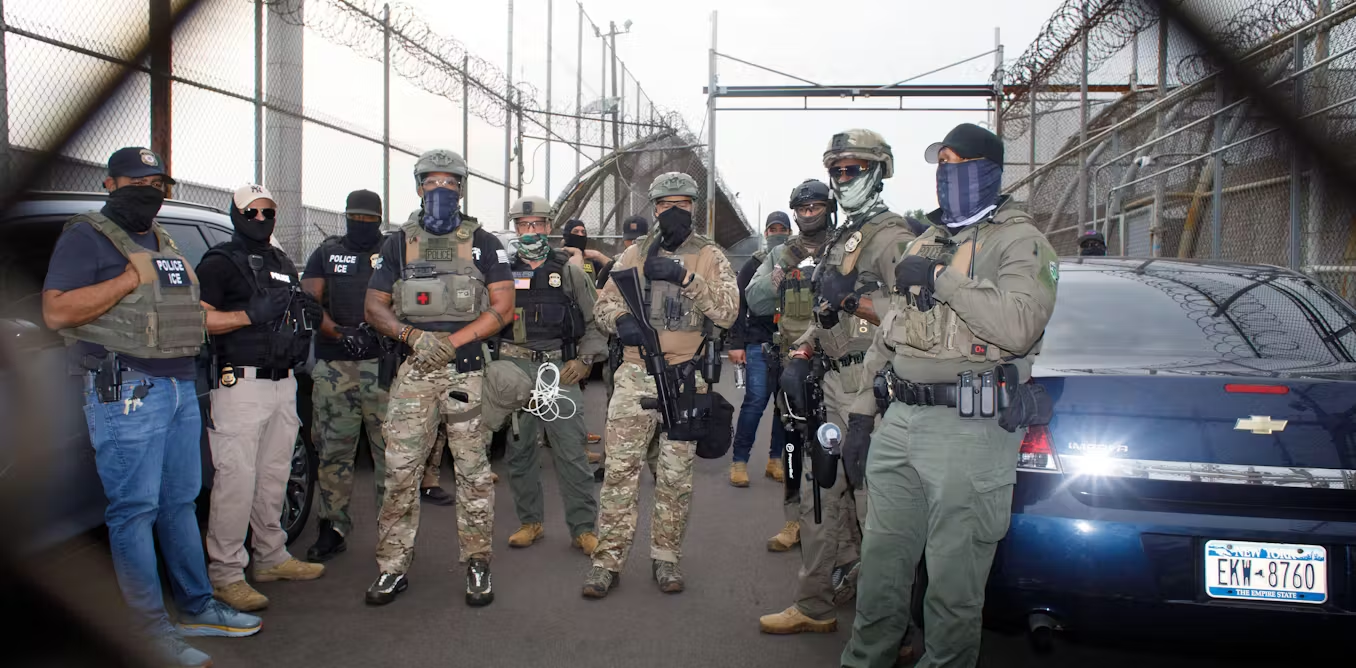The World in Focus | Analysis column
Thirty-five years after the US authorities officially launched the ten liberal principles that were to govern the global economy, set out in the Washington Consensus, President Trump has thrown out its commercial pillar—by announcing one of the largest tariff packages in history—and has returned to the path of protectionism. Returning to this path, with its imperial imprint, after complex productive linkages have been built, and weakening the institutions linked to the legal order that guaranteed them– promoted primarily by the US government–will have high costs for the global economy, among them, discouraging investment in export sectors.
As part of this protectionist trade policy, Trump has abandoned multilateral organizations such as the World Health Organization (WHO), UNESCO, and the UN Human Rights Council, and is weakening the World Trade Organization (WTO) by blocking the appointment of new judges to the institution’s Appellate Body for dispute settlement.
The new tariff geography
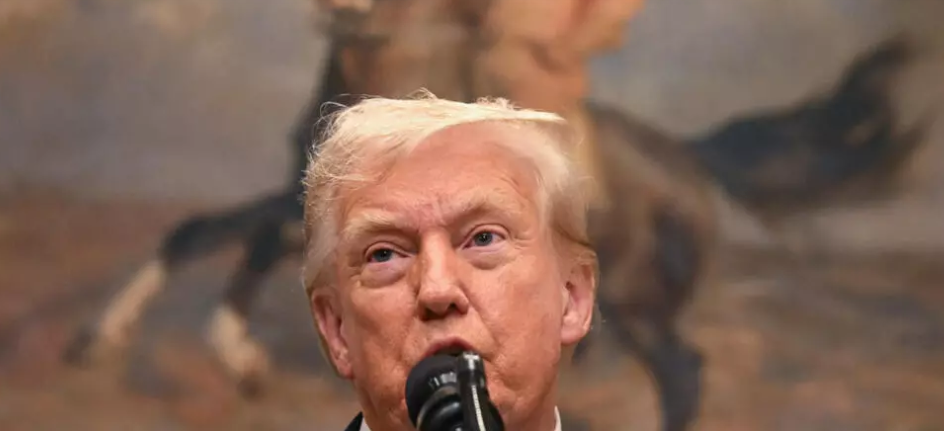
Starting Aug. 7, exports from almost the entire world are subject to tariffs when entering the United States. Their implementation is causing chaos in the international economy due, among other things, to President Trump’s back and forth, and criteria for imposing tariffs that are not only based on trade considerations of alleged inequality that harms his country, but also on their use as a geopolitical weapon. For example, Trump issued an Executive Order announcing the imposition of an additional 25% tariff on imports from India, thereby raising the tax on products from that country to 50%, on the grounds that “the Government of India is currently importing, directly or indirectly, petroleum from the Russian Federation.”
The same Executive Order warns that the Secretary of Commerce, Howard Lutnick, in coordination with Secretary of State Marco Rubio and Secretary of the Treasury Scott Bessent, will determine whether any other country is directly or indirectly importing Russian oil, which could lead to the adoption of measures such as imposing an additional 25% ad valorem tariff on imports of goods from that country.
As if the Chinese authorities were not paying attention to these statements, U.S. Secretary of Commerce Lutnick said the following day that he did not rule out the possibility that President Trump would impose more tariffs on China if it did not suspend oil imports from Russia. Chinese authorities have defended the legitimacy and legality of their economic, trade, and energy relations with Russia, and have indicated that China will continue to act with a view to ensuring the country’s energy security, despite the US president’s threat to impose secondary tariffs on countries that buy Russian oil. The spokesperson for the Chinese Foreign Ministry has stressed that “China’s normal economic, trade and energy cooperation with countries around the world, including Russia, is legitimate and legal” and has assured that they will continue to take “reasonable energy security measures” based on China’s national interests.
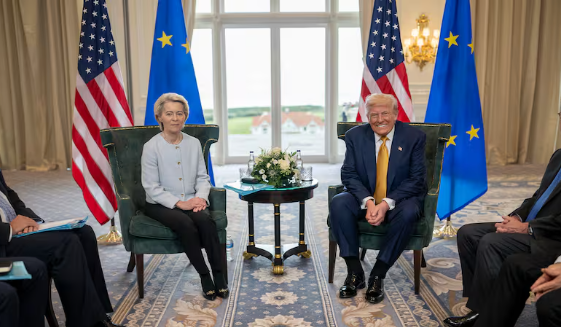
The agreement reached between European Commission President Ursula von der Leyen and President Trump in Scotland on July 27 includes a 15% tariff on most European products exported to the United States. It also includes a commitment by the European Union (EU) to purchase energy products—mainly oil, liquefied natural gas (LNG), and nuclear fuels—from its US partner worth $750 billion over three years. With the complete surrender of the old continent’s energy sovereignty, von der Leyen said that the E.U. would cease to depend on Russian energy supplies by 2028. On the other hand, an increase of $600 billion in European investment in the United States was agreed, which cannot be guaranteed by the European Commission. The agreement, which is not binding, has divided EU partners.
In Latin America
No country in our region has been spared: not even those that have signed free trade agreements (FTAs) with the United States. Not even Trump’s faithful follower, Argentina’s libertarian president Javier Milei, who is secretly negotiating a kind of Free Trade Agreement (FTA) with the United States. Except for Ecuador, Venezuela, and Costa Rica, which will have to pay tariffs of 15%, and Nicaragua with 18%, the rest have been imposed a generalized tariff of 10%. This tariff has no relation to whether or not the nation has a surplus or deficit trade balance with the U.S., or whether they have FTAs, as in the countries of Central America, Panama, the Dominican Republic, Chile, Colombia, and Peru. Most Latin American countries that have signed FTAs with the United States have a trade deficit with the United States.
The United States has imposed a 15% tariff on two of its main allies in the region: Ecuador and Costa Rica. The latter has signed an FTA and has a trade deficit with the United States, while Ecuador has been negotiating one unsuccessfully for years and has a trade surplus with its northern neighbor.
Mexico was exempted for 90 days from the 25% tariff that Trump imposed in early February on goods not covered by the 2020 United States-Mexico-Canada Agreement (USMCA), while maintaining it on Canada. The future is uncertain for these partners, as the USMCA will be reviewed in mid-August at the request of the U.S. president. Mexico sends about 85% of its exports to its northern neighbor, and Trump wants Mexico to allow U.S. troops to enter the country to fight drug trafficking.
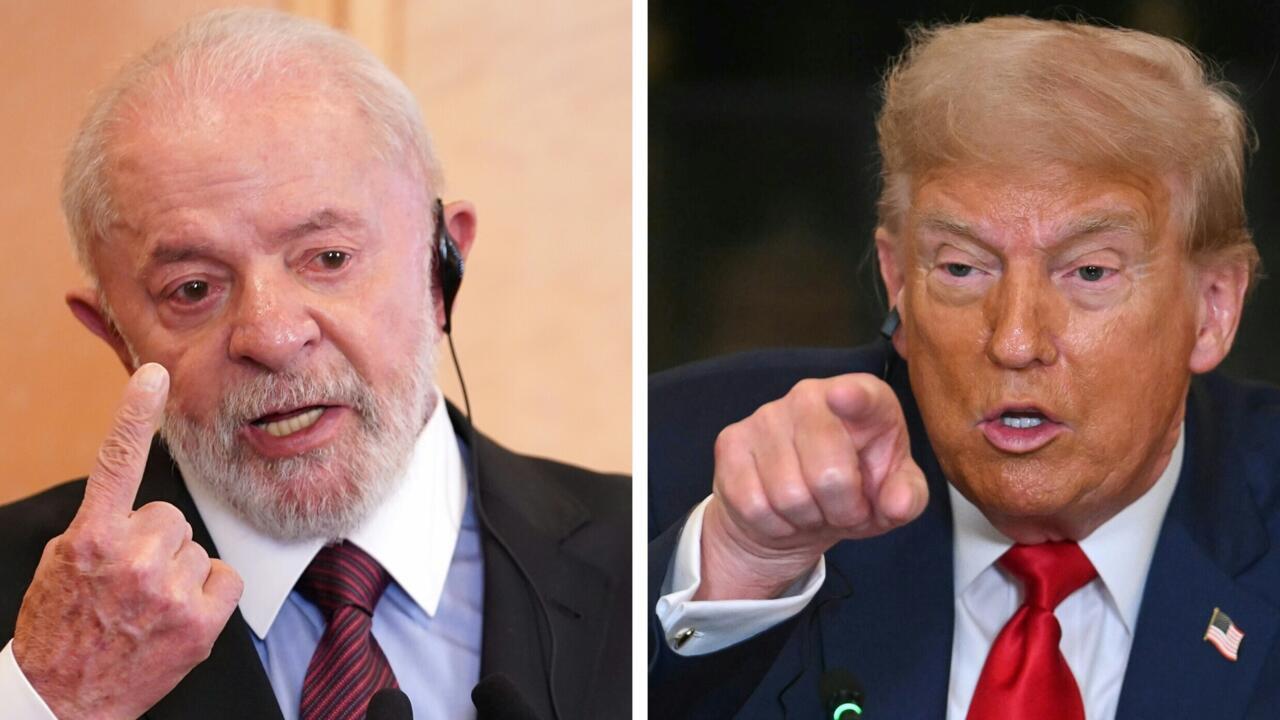
The hardest hit country has undoubtedly been Brazil. Trump imposed a 50% tariff on nearly half of the South American giant’s exports to the U.S. On July 31, Trump made the tariffs official, while exempting some important items, such as those from the EMBRAER company and orange juice, after signing an executive order invoking the International Emergency Economic Powers Act (IEEPA), which classifies Brazil as “an unusual and extraordinary threat to the national security, foreign policy, and economy of the United States.”
In response to Trump’s protectionist threats since he took office in January this year, the Brazilian government has a retaliation law that includes measures to release intellectual property rights. However, President Lula has said that he will opt for trade negotiations without interfering in the trial of Jair Bolsonaro, in accordance with the ruling of the Federal Supreme Court, and will not accept that the so-called Big Tech companies be exempted from complying with Brazilian law.
Except for the presidents of Brazil and Mexico, the rest have preferred to keep a low profile in their efforts.
Effects in the United States
According to the Treasury Department, the U.S. government collected nearly $30 billion in tariff revenue in July, representing a 242% increase in tariff revenue compared to July last year.
Donald Trump likes the idea of lowering income taxes and replacing them with tariffs, which has a regressive effect because the former benefit the wealthiest Americans, who earn the most. In contrast, tariffs on imported products increase the cost of everyday goods, which proportionally affect the lower-income population.
The increase in tariffs will backfire on U.S. consumers and businesses. For the time being, many companies have absorbed the higher costs without raising prices, although this is not the case for appliances, toys, consumer electronics tariffs, and other goods sensitive to tariff changes, which are becoming more expensive, according to recent inflation reports released by the government. Many companies, such as Walmart and Procter & Gamble, have warned of future price increases. The U.S. currently has an average effective tariff rate of 18.3%, the highest since 1934.
Final sales to consumers have slowed (1.2% in the second quarter compared to 1.9% in the first). Private consumption has been volatile, with a recovery in the second quarter, but moderate growth projections for the rest of the year. The unemployment rate (4.2%) rose by +0.1% in June, and 73,000 jobs were created in the same month, well below expectations. Job creation during May and June has been revised sharply downward.
Because President Trump did not like the weak job creation figures, he fired the head of the Bureau of Labor Statistics, Erika McEntarfer. For many, her dismissal is yet another example of the extraordinary exercise of presidential power, and more proof that Trump is using the authority of the White House to try to control the international trading system, media companies, major US universities, and the constitutional power of Congress over the budget, among other institutions. Trump also harshly criticized Fed Chairman Powell for his decision to keep interest rates unchanged. Inflation stood at 2.7% in June, up from 2.4% in May and above Powell’s 2% target.
The IMF forecasts US economic growth of 1.9% for 2025 (down from 2.8% in 2024) and warns that “persistent trade shocks” could undermine medium-term stability.
The imposition of tariffs on exports entering the US market is taking place in a context characterized by a dispersion in the construction of global power, whose most visible expression is the growing prominence of the BRICS+ members. This forum is rejected by President Trump, who sees it as a potential threat to the hegemony that the United States still maintains, although it is increasingly shared.
The growing rivalry between the United States and China is expressed not only in the trade war, which began during Trump’s first term, but also in measures that impede China’s technological development, such as banning the export of US-made nanochips from other countries and establishing alliances with countries that produce technology to which China does not have access. Along these lines is ex president Biden’s proposal to form a Chip 4 Alliance that seeks to build a semiconductor supply network with Asian powers (South Korea, Japan, and Taiwan) and deprive China’s chip industry of these inputs, despite the fact that sales of leading technology companies in these countries, especially those in South Korea and Taiwan, depend significantly on the Chinese market. Similarly, agreements with Japan and the Netherlands, through their companies ASML Holdings and Nikon Corporation, to ban the sale to China not only of the most modern chips, but also of the largest and oldest ones, used mainly in the automotive and industrial sectors.
The problem for the United States is that the imperial imposition of tariffs and sanctions will backfire, since in an interdependent world, the affected countries will seek to divert their trade away from the United States or try to use means other than the dollar to trade. This undermines its privilege of having the international currency and reserve currency, which weakens its leadership capacity.

“The World in Focus” is Ariela Ruiz Caro’s biweekly column for Mira: Feminisms and Democracies. Ariela Ruiz Caro is an economist with a master’s degree in economic integration processes and an international consultant on trade, integration, and natural resources at ECLAC, the Latin American Economic System (SELA), and the Institute for the Integration of Latin America and the Caribbean (INTAL), among others. She has served as an official of the Andean Community, advisor to the Commission of Permanent Representatives of MERCOSUR, and Economic Attaché at the Embassy of Peru in Argentina.
